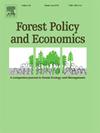需求侧激励政策如何推动森林健康旅游产品的扩散:基于主体的模型分析
IF 3.8
2区 农林科学
Q1 ECONOMICS
引用次数: 0
摘要
森林康养旅游的市场份额相对较低,迫切需要制定有效的推广战略。然而,目前缺乏针对森林康养旅游产品特点的推广激励政策的有效性研究。此外,消费者之间相互依存的决策过程也增加了政策评估的复杂性。为此,本研究以传染病模型为基础,建立了森林康养旅游产品的微观扩散模型。利用代理建模(ABM),模拟了不同需求方激励政策下不同层级森林康养旅游产品的扩散过程,并考察了不同政策措施及其组合的相对有效性。模拟结果表明当补贴强度超过 0.5 时,对舒适型森林康养旅游产品扩散的促进作用递减更加明显。在舒适型森林康养旅游产品中实施康养基地认证政策对最终扩散结果的影响更大。舒适型森林康养旅游产品的扩散是一个长期的过程。④ 不同层次的产品,政策实施的轻重缓急不同。⑤ 为提高成本效益和可持续性,应将经济激励政策和非经济激励政策结合起来推广森林康养旅游产品。研究成果为相关政府部门深入了解森林康养旅游市场变化的微观逻辑、优化相关激励政策提供了科学依据。本文章由计算机程序翻译,如有差异,请以英文原文为准。
How demand-side incentive policies drive the diffusion of forest wellness tourism products: An agent-based modeling analysis
The market share of forest wellness tourism is relatively low, and there is an urgent need to formulate effective promotion strategies. However, there is a lack of research on the effectiveness of diffusion incentive policies tailored to the characteristics of forest wellness tourism products. Moreover, the interdependent decision-making process among consumers adds complexity to policy evaluation. To this end, the study develops a micro-level diffusion model for forest wellness tourism products based on the infectious disease model. Using agent-based modeling (ABM), it simulates the diffusion processes of different tiers of forest wellness tourism products under various demand-side incentive policies and examines the relative effectiveness of different policy measures and their combinations. The simulation results show that: ① When the subsidy intensity exceeds 0.5, the diminishing effect on the promotion of the diffusion of comfort-oriented forest wellness tourism products becomes more apparent. ② Implementing wellness base certification policies in comfort-oriented forest wellness tourism products has a stronger effect on the final diffusion outcome. ③ Relying solely on information promotion policies to diffuse comfort-oriented forest wellness tourism products is a long-term process. ④ The priority of policy implementation varies depending on the different levels of products. ⑤ To enhance cost-effectiveness and sustainability, economic and non-economic incentive policies should be combined to promote forest wellness tourism products. The research results provide a scientific basis for relevant government departments to deeply understand the micro-logic of changes in the forest wellness tourism market and optimize relevant incentive policies.
求助全文
通过发布文献求助,成功后即可免费获取论文全文。
去求助
来源期刊

Forest Policy and Economics
农林科学-林学
CiteScore
9.00
自引率
7.50%
发文量
148
审稿时长
21.9 weeks
期刊介绍:
Forest Policy and Economics is a leading scientific journal that publishes peer-reviewed policy and economics research relating to forests, forested landscapes, forest-related industries, and other forest-relevant land uses. It also welcomes contributions from other social sciences and humanities perspectives that make clear theoretical, conceptual and methodological contributions to the existing state-of-the-art literature on forests and related land use systems. These disciplines include, but are not limited to, sociology, anthropology, human geography, history, jurisprudence, planning, development studies, and psychology research on forests. Forest Policy and Economics is global in scope and publishes multiple article types of high scientific standard. Acceptance for publication is subject to a double-blind peer-review process.
 求助内容:
求助内容: 应助结果提醒方式:
应助结果提醒方式:


